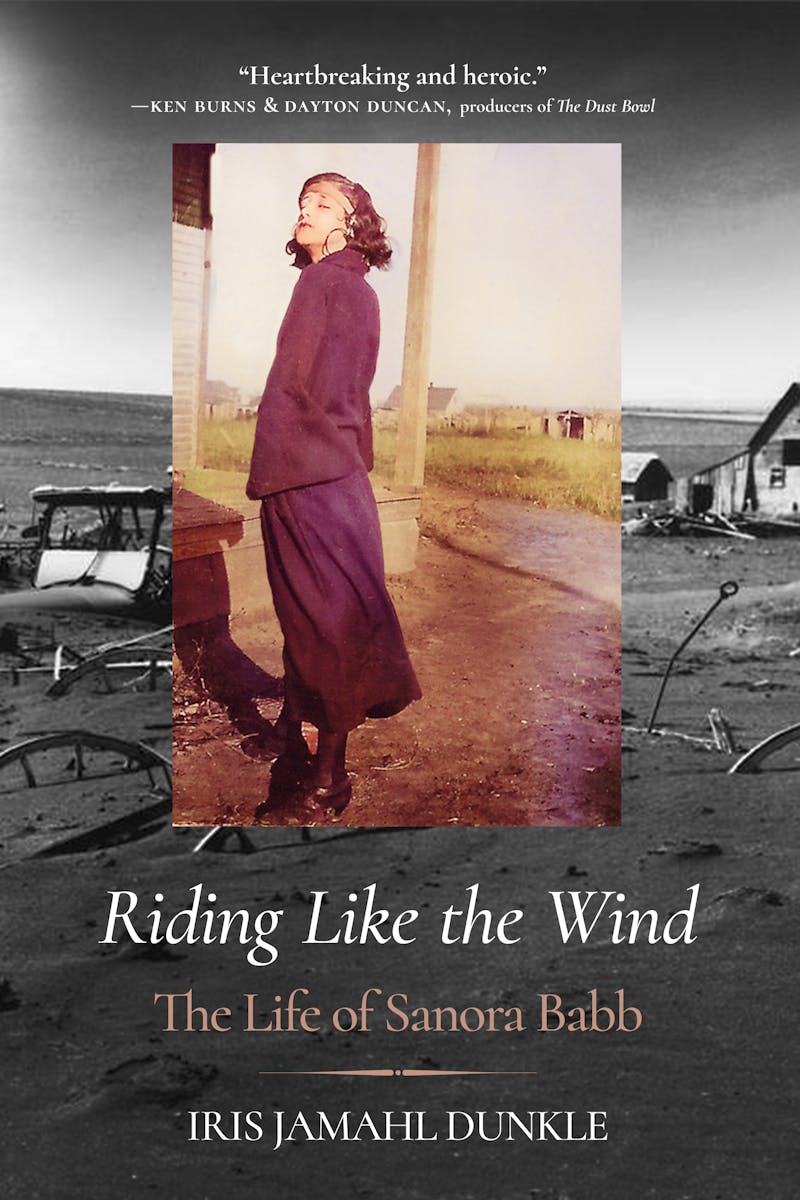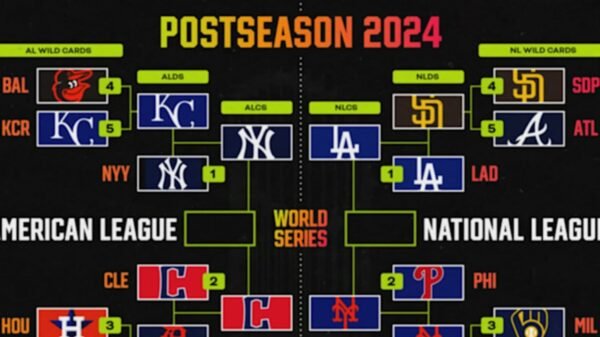Sanora Babb spent her life coping with all of the multifarious
each day perils that stop writers from writing. She was raised in poverty by a
mom who was solely 16 when she gave delivery to her and an abusive father who
spent his days taking part in semi-pro baseball and playing. From the age she might
stroll, she was operating errands for her dad and mom’ bakery and,
later, serving to them elevate crops till drought put their mortgaged farm out of
enterprise. She not often had time for varsity (and even loved quick access to 1)
and realized to learn from pages of The Denver Publish that had been pasted to
the crude partitions of their dugout residence in East Colorado. (Her father described
the place as trying “like a grave.”)
Babb’s observations of rural poverty, significantly throughout
the Despair and the Mud Bowl, would filter by the imaginations of
tens of millions of Individuals in years to come back—although not directly and infrequently with out
credit score. Babb knew intimately of what she wrote. Even when her dad and mom began
making higher cash, and she or he labored arduous sufficient to earn a uncommon scholarship to
the College of Kansas, her first instructing job depressed her so deeply that
she couldn’t preserve it for lengthy. She was usually required to do
janitorial work in addition to run courses, and couldn’t bear to see kids come
to highschool as poorly clothed and fed as she had been at their age. By the point
she moved to Los Angeles and located work as a radio and print journalist and
screenwriter within the late Nineteen Twenties, the Despair hit and she or he spent a number of
months sleeping tough in Lafayette Park with different out-of-work writers.

Driving Just like the Wind: The Lifetime of Sanora Babb
by Iris Jamahl Dunkle
College of California Press, 416 pp., $27.95
The primary few a long time of her life had been an limitless spherical of
determined exigencies. When she lastly began making an honest dwelling, her
ardour for political causes took up much more of her time.
She joined the John Reed Membership, traveled all through Europe and
postrevolutionary Russia, and attended one of many first League of American
Writers Congresses in New York Metropolis within the mid-Thirties, driving there cross-country with Tillie Olsen and driving again once more with Nelson Algren. In her
twenties, she turned the first carer for her youthful sister, who suffered
from psychological sickness; and in later years, from 1971 to ’76, she cared for her
husband, the good cinematographer James Wong Howe, after he suffered a significant
stroke. Regardless of the decade, and no matter
the 12 months, it was uncommon for Babb to scrape up quite a lot of hours right here and
there to give attention to the good tales, novels, and poems she had in her.
And but she managed to wrestle a number of hard-won achievements
into the world: She wrote most likely the best novel ever written concerning the
Mud Bowl, Whose Names Are Unknown, solely revealed many a long time after
she offered the primary chapters and description in 1938; she excelled in a number of
totally different literary types—from journalism (she co-edited a radical newspaper
with Claud Cockburn in London within the Thirties) and discipline notes from California
migrant camps to memoir, lyric poetry, brief tales, and even screenwriting; and
regardless of her tendency to be extra overtly supportive of different writers than they
ever gave the impression to be of her, her life was so wealthy with good work that the majority
of it will definitely achieved publication.
Essentially the most profound impediment Babb confronted in her strenuous life
was a case of dangerous writerly luck of now-legendary proportions. Though she took
the cautious upward route of many self-taught younger writers, she by no means caught
the decisive break she wanted.
Simply when her rigorously composed early
brief tales and essays started attracting the eye of New York editors,
she signed a contract for a novel concerning the Mud Bowl, based mostly on her youthful
expertise in Crimson Rock, Oklahoma; and with the intention to additional analysis the westward
migration of her fellow Oklahomans, she took a volunteer job with the Farm
Safety Administration in Southern California, serving to to maneuver refugees into
state-funded, self-governing resettlement camps. Initially, Babb solely meant
to assemble data; however as in the whole lot she did, she quickly developed a
passionate concern for the folks she met and the tales she heard, hurling
herself into the challenge with the fierce depth of a girl who at all times appeared
to be working twice as arduous as everybody round her.
Her supervisor, Tom Collins, summed up her achievement in a letter
he wrote to Babb on the conclusion of her work:
1.
You visited tents, shacks, cabins and hovels. 472 households or 2175 males, ladies,
and youngsters.
2.
You interviewed and signed up 309 households or 1465 males, ladies and youngsters.
3.
Whole households you met and know 781.
4.
Whole people you met and know 3640.
5.
You, due to this fact, unfold happiness and hope to all these—and we thanks with
all our hearts.
Her work for the FSA
yielded a whole lot of pages of notes and pictures, a lot of which had been
posthumously gathered in On the Dirty Plate
Trail: Remembering the Dust Bowl Refugee Camps
(2007). These laboriously accrued pages would testify to 2 overriding
elements of Babb’s character: that she wasn’t afraid of labor and that she
possessed an nearly bottomless compassion for everyone she met who led a
harder life than she had.
When a pal of her supervisor arrived on the camps to
analysis his personal novel, Collins satisfied Babb to show over a duplicate of her
in depth discipline notes. The author’s title was John
Steinbeck; he had loads of expertise and compassion of his personal; and he knew how
to make fast use of fine materials when he noticed it. A lot of Babb’s work went
straight into Steinbeck’s subsequent draft—particularly the parts set in a
California refugee camp. And after The Grapes of Wrath turned a
bestseller, Babb turned within the remaining draft of her personal Mud Bowl novel to Bennet
Cerf, solely to be informed that the bookstores weren’t large enough for 2 novels on
the topic. And so Babb’s novel, titled Whose Names Are Unknown, lay
unpublished—regardless of steady revisions and submissions to alternate
publishers—for practically half a century.
Which isn’t to say that Steinbeck didn’t
acknowledge how a lot he was aided by Babb’s discipline notes. In reality, he devoted Grapes
to the person who he felt had most helped him safe these helpful pages:
Sanora Babb’s supervisor, Tom Collins.
Even when Names
had been allowed to compete with Grapes of Wrath within the literary
market, it will nearly actually have didn’t outsell or outshine it.
Babb’s work was largely antithetical to that of Steinbeck, and its “message”
was much more sophisticated. Whereas Steinbeck targeted on the highway journey carrying
the Joads away from their already collapsed farmland, your entire first half of
Babb’s novel describes a number of years of the travails of the Dunne household, who wrestle
to develop broomcorn and wheat whereas their land grows more and more parched,
dust-storm-ridden and uninhabitable. Within the second half of Babb’s novel, the
Dunnes don’t merely undergo the California farm growers, or lose their
mood, like Tom Joad, and flee, however bear down and change into more and more concerned
with labor organizers and strike actions.
Steinbeck’s prose infused
the panorama with nearly heavenly atmosphere, seeming to argue that the world
was bountiful sufficient for everyone, if rich landowners may very well be pressured to
cease hoarding its riches. Babb’s prose, nevertheless, doesn’t exude the identical
effulgence; and whereas Steinbeck’s characters by no means actually surpass their
important nature (whether or not they’re the drunken, well-meaning paisanos of Tortilla
Flat or the always-striving Joad household who can by no means outstrive an
exhausting world), Babb expects extra from her principal characters than to die,
lose hope, relapse into pure weaknesses, or wither away. Her characters are
by no means crushed down so arduous they don’t discover a technique to climb up out of their
failures and provides life one other likelihood.
The conclusions of Grapes of Wrath
and Names couldn’t make this distinction extra clear. Steinbeck’s Joads
are in the end crushed all the way down to little greater than their barely pulsing biologies—huddling
collectively for heat whereas the bereaved mom, Rose of Sharon, breastfeeds a
ravenous man. Babb’s characters wrestle to their final narrative breath to
envision a future that can have them. Within the concluding paragraph of Names,
confronted by company forces that personal “weapons and golf equipment and tear fuel and vomit
fuel and them vigilantes paid to fireside the weapons,” Babb’s Julia Dunne sees one
factor “as clear and excellent as a drop of rain. They’d rise and fall and, in
their falling, rise once more.”
It’s arduous to recall a author who writes extra
vividly and affectionately about American panorama than Babb; her characters
journey throughout its vastness with an nearly invulnerable affection for what
surrounds them, no matter cataclysms erupt. Early within the novel, when Julia and
her daughters are pushed out of a neighbor’s residence into an oncoming mud storm,
the true violence isn’t that of nature however of the neighbors, who’ve ejected
them from their residence to allow them to maintain themselves. And nature is at all times stunning, even when it’s at its most threatening:
They
had been nearly a mile approach, strolling within the hole, when the rain started in massive
gradual drops, and the far horizon quivered with sheet lightning. Fork lightning
snapped abruptly, splitting the transferring clouds, flashing near the wires. The
complete flat world underneath an indignant churning sky was miraculously lighted for a
second. A wierd liquid readability prolonged to the ends of the earth. Julia noticed
the timber alongside the creek and animals grazing distant. The grim farmyards
with their stern buildings, scattered sparsely on the plains, stood out in
bare lonely desolation. A sly delicate wind was rising. Their clothes moved
ever so little. Thunder clapped and boomed. They had been afraid of the electrical energy
that speared into the bottom with a terrifying crash after. Julia stopped for a
second to get her breath and have a look at the approaching storm. Then she took
Lonnie from the bumping cart and pulled her alongside by the hand, whereas Myra
pulled the cart and clung to the pail of milk. They moved off the highway away
from the wires, going by the open hole.
There isn’t a Steinbeckian pantheistic drive in Babb’s
landscapes that joins human beings right into a steady environmental oneness;
there may be solely nature’s huge stunning indifference throughout which individuals reside,
love, wrestle, and yearn. When her daughter asks if a cyclone is perhaps forming,
Julia consoles her: “It’s solely an electrical storm.… Rain gained’t harm us. It’s simply
scary.” Nature is neither malign nor consolatory; it’s implicitly nothing extra
or lower than itself.
And concern doesn’t come up from the world; it arises from people
when they’re bereft of each other.
The failure of Names
wasn’t the one occasion in Babb’s lengthy event-filled life that was troublesome to
distinguish from legend. Iris Jamahl Dunkle’s compassionate and
respectful biography, Riding Like the Wind: The Life of Sanora Babb (largely based mostly on tales recounted by Babb and her household, in addition to passages
from Babb’s work), is full of tales of a life that was lived to nearly
tall-tale proportions. On the age of 5, Babb earned the nickname “Cheyenne—Driving
just like the Wind” from an Otoe chief after the horse he gave her went galloping
wildly out of city whereas unyielding younger Babb held on tightly, bareback. And
although she was unable to begin college full time till age 10, she labored arduous
sufficient to be named class valedictorian—solely to have her commencement speech reduce
on the final minute when the college authorities determined to not honor the
daughter of a infamous native gambler.
As a younger girl in Los
Angeles, she went out to MGM on the lookout for screenwriting work, the place she caught
the always-roving eye of Irving Thalberg, who invited her again to his workplace to
join a special profession completely—one which most likely required spending at
least a while on the casting sofa. She turned down each gives and, when
later requested if she was an actress, replied, “No. I’ve simply had a slim
escape.” At one level, when she was out on a date together with her eventual husband, James
Wong Howe, a “finely dressed” girl drove up behind them in her automobile and,
angered by the sight of a white girl with an Asian man, shouted abuse. In
reply, Babb engaged in a road altercation that, by the tip, left the lady
shouting “My hat! My $100 hat!”
This absorbing biography, written with each
affection and admiration, reveals Babb as probably the most indefatigable
characters in American literary historical past. Like Edna St. Vincent Millay, the poet
who most impressed her, Babb “wasn’t somebody who believed in monogamy,” and she or he
fortunately shared her passions with many notable males—corresponding to William Saroyan and
Ralph Ellison. (In reality, her second novel, The Lost Traveler, is considered one of
the few naturalistic novels wherein the sexually adventurous younger girl isn’t
punished for ethical failure, as Theodore Dreiser’s antiheroine is in Sister Carrie
or Kate Chopin’s Edna Pontellier is in The Awakening.) She traveled
extensively, usually hitchhiking alone throughout nation and thru Mexico; she wrote
the lyrics for a preferred track, which had been then “swiped” by somebody who
revealed them underneath their very own title; and she or he organized a walnut growers’ strike in
Modesto, California, which precipitated her to spend not less than one evening in jail.
It was solely when Babb started
struggling bouts of sick well being—partly the results of an impoverished childhood
weight loss program and partly from a nervous breakdown set off by studying that her former
lover Ralph Ellison had remarried—that she lastly settled down completely
with Howe. However even then, she at all times gave the impression to be doing the work of three or
4 ladies. She helped him purchase and handle a Chinatown restaurant and took
cost of lengthy visits from his household whereas he was engaged on film units. They
surreptitiously purchased a home collectively within the Hollywood Hills, and after California’s ban on interracial marriage was discovered unconstitutional, they married in 1949. However even then, it
wasn’t straightforward to discover a decide who would carry out the service.
She was clearly as passionate in her political activism as
she was in her private relationships. After many difficult years of marriage,
when her relationship with Howe had not been completely monogamous, she
ultimately settled down, and the 2 would usually write “small candy love notes”
and go away them round the home for one another to search out. One among her finest brief
tales, “Reconciliation”—a couple of married couple coming
collectively once more after a separation to have a tendency their uncared for backyard—reads like an
homage to their lengthy, usually troublesome, and simply as usually devoted, relationship.
Whereas Babb endured greater than her share of dangerous luck in
publishing, she developed many devoted mates and followers who noticed
her by a long time of darkness right into a late middle-aged interval that approached
modest fame. Her brief tales had been repeatedly revealed in varied important
journals and reprinted in “better of the 12 months” volumes; she discovered an agent, and
ultimately offered and revealed her second novel, The Misplaced Traveler, based mostly
on childhood reminiscences of rising up with a generally brutal, errant father. Her
1970 memoir, An Owl on Every Post, earned a short time on bestseller
lists, adorned with quotes from her longtime mates and admirers Ralph Ellison
and Ray Bradbury.
Dunkle’s biography likewise depends on the work of Babb’s
mates, students, and particularly her late-life agent, Joanna Dearcrop, who
helped Babb lastly get Whose Names Are Unknown revealed after a
half-century delay in 2004, whereas Babb was mendacity in mattress with an exhausted physique
that couldn’t carry her a lot additional. And ultimately, her outstanding discipline
notes, cited by Ken Burns in his Mud Bowl documentary on PBS, led to new
editions of her poetry and prose.
The foremost query about Babb’s outstanding work
will not be “Why did she write so little?” however reasonably: “How did she discover the time to
write something in any respect?”
Whereas she is finest identified for
a novel that wasn’t revealed till she was nearly lifeless, her items are
fantastically displayed in quite a few brief tales and poems that carry readers
by areas of reminiscence, panorama, and expertise. On one journey by
Mexico and South America, Babb gathered materials for “The Bigger Cage,” about
an orphan who finds a house (of types) with a household that sells wild native birds
to vacationers; they train him to “practice” the birds by filling their bellies with
buckshot, which inevitably kills them. However human cruelty is rarely the topic
of Babb’s fiction—reasonably it’s the human capability to carry kindness into the
world, and the protagonist of “The Bigger Cage” learns that there are higher
methods to coach stunning birds than by tormenting them.
It’s maybe essentially the most
outstanding (and unsatisfactory) truth of Babb’s life that whereas she didn’t
produce huge novels at instances that had been acceptable to the publishing trade,
she spent her life succeeding in far much less industrial types—such because the brief
story, the lyric, and the memoir. Many writers are recalled for the good issues they
achieved in life aside from their dwelling of it; however Babb’s
biggest genius might have been her capability to supply lasting work with out
leaving anybody in her life behind.























































